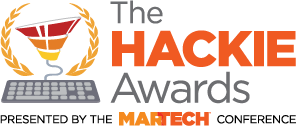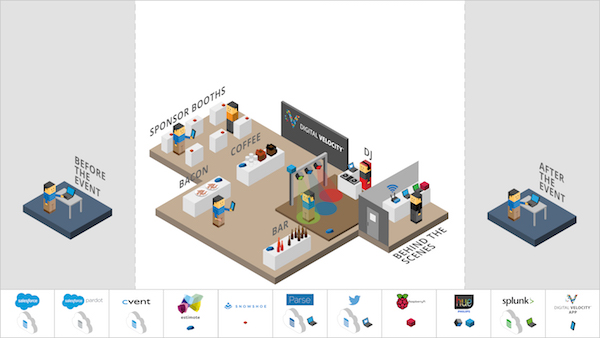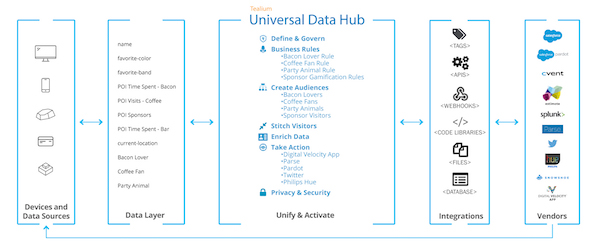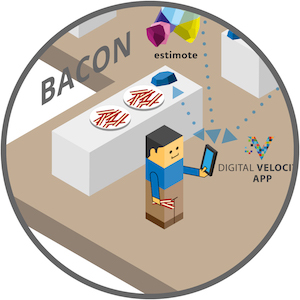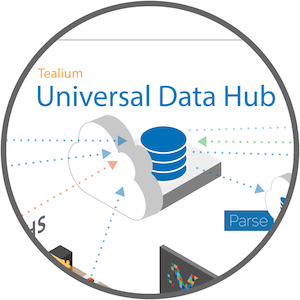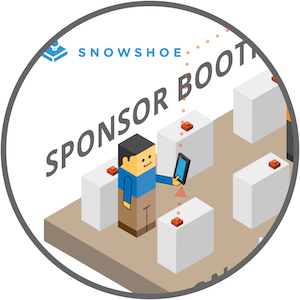This article is a guest post by Matthew Parisi of Tealium. It was entered into The Hackies essay contest for the upcoming MarTech conference. Like it? You can register your vote in the contest by sharing it on social media, especially LinkedIn, Facebook, and Twitter.
As a marketer, it can be frustrating to recognize the chasm between the promise of technology and the reality of delivering on that promise.
Sure, you can come up with a cool idea like using bacon to emotionally connect with your customer, but then how do you use that newfound behavioral data to productively move a customer along their journey? Unfortunately, bacon doesn’t have a conversion tag that fires once it hits your customer’s stomach to measure ROI. BUT, we do have these cool new IoT beacons… hmmm, how can these connect?
When you think about it, the challenge always comes down to data. That’s why we created a fresh, flexible approach to data strategy meant to manage the newfound challenges of technology proliferation under any scenario or campaign idea.
Creating a Ubiquitous Customer Experience Centered Around a User Conference
Our annual user conference was a perfect venue to hone a new process and see how we could bring together a seamless customer experience, bridging online and offline, built on an expansive cross-channel, cross-device data foundation. We’ll keep the examples simple for discussion, but try to imagine the possibilities for contextual marketing built on top of this data foundation.
Step 1 — Concept/Strategy
With a target audience of hundreds of digital marketers and technologists we needed to put together an experience that was engaging, novel and begged the question, “How is this possible?”
Our idea centered on leveraging the fun elements from conferences (drinking, networking, coffee, food — and, of course, the sponsors) as a vehicle to emotionally connect with attendees.
We could put beacons around the conference hall and use the conference mobile app to send data to our Universal Data Hub for action. By coming up with digital approximations for real-world action (e.g., eating bacon as measured by proximity beacons), we could go about building digital and physical experiences based on data from any source — assuming we had a vendor-neutral data foundation to leverage.
Here’s what we set out to build:
Party/Lounge Areas
How cool would it be to walk into a party and the party tailored itself to you? The lighting could change to your favorite color. And, most importantly, everybody wants to hear songs from their favorite bands. We set our sights on providing a personalized party experience.
Coffee
Coffee lovers might be the easiest people to please with gifts. What do they want? More coffee, of course. We decided that individuals who visited the coffee stands at a high enough rate would surely appreciate a Starbucks gift card.
Bacon
Who’s the biggest bacon lover? This accolade is surely something that many would take pride in. In previous years, we served candied bacon and it was a huge hit — but we only knew that based on word of mouth and had no idea of downstream impact. We chose to award a bacon lover’s kit to the biggest bacon lovers as determined by who spent the longest time at the bacon table.
Sponsors
This one’s a little trickier. How can you make visiting partner booths more interesting, exciting and easier? If the experience of visiting sponsor booths was more of a game, we thought we could inject some fun in the process, encourage some conversations that otherwise wouldn’t happen, and thereby please both attendees and our sponsors. We incentivized sponsor booth visitation, but in a way that didn’t diminish the value of a booth visit.
Step 2 — Map Point Solutions to Strategy
At this point, we have an idea that we think is possible, but how specifically are we going to deliver? Let’s deal with the execution part (point solutions) first…
When our business rules across systems identify a Bacon Lover, that doesn’t do much unless we deliver an experience. We leveraged the following technologies in our stack to provide the experience from our strategy (in order):
- CRM = Salesforce: Historical customer data stored in our CRM, much from other systems we’ve unified.
- Marketing Automation = Pardot: Before, during and after the event, Pardot enabled a customer engagement channel.
- Event Registration = Cvent: Augment existing customer data (from many sources, including CRM) during conference registration with attendance, favorite color and music bands.
- IoT Location = Estimote Beacons, SnowShoe Stamps: Conference app integrated with beacons and SnowShoe stamps (unique identifiers that communicate through phone touchscreens) to measure attendee movement near points of interest.
- Analysis = Splunk: Monitor and analyze data in real-time to customize experience based on our hypotheses (for eventual automation).
- Push Notifications = Parse: With app installed, Parse enables push notifications to communicate with attendees in real-time.
- Music Personalization = Twitter: Favorite music for attendees tweeted to DJ when on the dance floor.
- IoT Lighting = Philips Hue Lights + Raspberry Pi: Personalize party/lounge experience with Philips Hue personal wireless lighting system displaying that attendee’s favorite color.
Here’s how the technologies intersect with our strategy:
Step 3 — Map Data Supply Chain
It’s all built on the data supply chain. Your data supply chain should contain all the following functionality; collection, storage, enrichment, unification and activation:
- Data Collection — Ideally collected from any source: online (client-side and server-side) and offline/off-site. Salesforce/Pardot, Cvent, and Estimote Beacons are all collecting data in our data supply chain, then sending it to a central hub for enrichment and activation. We use Tealium’s Universal Data Hub (UDH) to manage data collection across client and server-side technologies.
- Data Storage — The data must be sent to a central location where it can be acted upon in real time. Can’t store it all in CRM (not real-time, doesn’t integrate with every execution tool to act on data in real-time). We used our UDH to store data where it could be accessed in real time for action. Key to have a substantial number of integrations to get the data from anywhere.
- Data Enrichment — A mechanism to enrich data in a customer profile in real-time is required because we need to know on-site, in real-time who is spending time where at the conference. We need to be able to identify a customer profile and assign an attribute, like Bacon Lover, to that customer as the behavior occurs. Our UDH combined with a data layer for standardizing and adding data variables (more on this below) allows us this flexibility, along with the central database that correlates it.
- Data Unification — Data will need to be unified from various sources, cross-device and cross-channel. We’ll need a way to connect a mobile device user with an app as the same person who may have registered for the conference using Cvent on their desktop computer (for example). Our UDH also fills this gap for us. As data flows in from multiple systems the UDH automatically unifies data by mapping to a persistent ID.
- Data Activation — Simply having access to unified data isn’t enough. We have access to a mind-boggling amount of data — what we need is a way to act on the unified cross-channel and cross-device data as it happens using business rules. The UDH with integrations to all of our stack point solutions allows us to use audience attributes in real time to trigger marketing actions.
To create a data supply chain that’s flexible, you’ll need to define data in a common way across systems. One system might refer to a visitor’s email as “email_address” while another calls it “visitor_email,” and so on. A data layer, configured to map various vendor-specific variable names to your official variable name solves this.
The beginning of your data supply chain is the mapping of data sources to variables in a data layer. The data layer variables then should map to business rules, audiences and actions. You can then identify the integrations required to apply these rules in your execution systems (data activation). What happens in these executions systems is fed back into this virtuous loop as data is collected and continues to pass through the program.
Our data supply chain looks like this:
Step 4 — Define Audiences & Build Campaigns for Them
We began asking questions such as “What constitutes a bacon lover?” or “How many cups of coffee does it take to identify a big coffee fan?” It’s not important that you get it right the first time, so long as it’s monitored. If you have historical data to base your audience definition on, even better. After that you can optimize and automate.
At this point, we have validated what systems will carry our messages (step 2), how the messages will be informed (step 3), along with who we’re targeting (audiences). So, we need to build the infrastructure for where we’ll be delivering data and when. We created programs for our conference mobile app, push notifications (Parse), beacons at food stations, SnowShoe stamps, custom lighting, custom music (Twitter), and conference prizing (sponsors).
The logic was built via business rules defining a bacon lover, a coffee fan, a party animal and the gamification of the conference experience around sponsor visits. Step 3 (above) shows what data we created by enriching our unified customer profile, what data we acted upon and what rules we set up to drive the experience. Unified data was used to activate a consistent experience across systems.
Step 5 — Connect the Data Dots
Armed with a data supply chain map (from collection to activation) and a data layer, we can go about creating an omnichannel customer experience that seamlessly extends across devices and engagement channels.
Here’s the data supply chain layered on the conference experience:
Conference app and IoT devices are key to contextual customer engagement — both are supplying data and providing communication channel:
UDH collecting data, enriching, unifying and activating all systems:
Monitoring experience for optimization and automation enhancements over time:
Data integrated with IoT devices to provide personalized experience:
SnowShoe stamps provided data powering sponsor experience:
Step 6 — Test & Launch
Don’t skip testing no matter how alluring it may be. The fun part should be launching your program and seeing what happens, but it can quickly become a nightmare if you haven’t tested.
Step 7 — Monitor, Optimize, Automate. Repeat.
As mentioned in Step 4, it can be difficult to define new audiences and attributes, so monitor and see what the data tells you.
We picked a starting point, then monitored without preconceptions to allow flexibility during the conference and ultimately enable the creation of a truly customer-centric experience over time. We’re still on this step.
Based on our monitoring, we made optimizations around the accuracy in identifying and deepening sponsor visits. Instead of our original approach using beacons to identify sponsor visits, we started to use SnowShoe stamps that required the sponsor to press a stamp on attendees’ mobile devices. This led to deeper interactions and better reflected a true booth visit.
Changing elements of the program and measuring how customer behavior changes are central to our approach. With a baseline of behavior data on identifying audience members and tailoring experience, we now know how compelling our offers were. We’ll use this to optimize the experience for our next conference.
For future events, we have learnings that will allow us to automate certain experiences while we monitor others. Now that we know what a bacon lover looks like, we can automate marketing actions to happen once bacon fandom is established. Over time we’ll automate a more nuanced bacon lover experience based on what the data tells us and move our monitoring focus to the next big thing.
Step 8 — Innovate
Pick out small improvements, test, monitor, optimize and automate until your customer experience grows to perfection.
Now that we learned and automated a bacon lover experience, we can look forward to the next experience evolution. With the advent of AI technology and chatbots, we can use the conference data we’ve accumulated over the years with exciting new technologies to create an even more personalized event customer experience.
Imagine chatting with the app to figure out the next best session to go to, then the possibilities from the marketing side to tailor messaging based on feedback to the session suggestions. If you have your data foundation in place, you’ll be well prepared to seamlessly slot in new technologies as they emerge while also making more efficient use of legacy systems.
Results
It caught some by surprise (in a good way):
Others, including our fearless VP, were warmly greeted in the morning after our big 80s dance party the night before with a “recovery kit” based on the amount of time spent at the bar and on the dance floor.
Through all this fun, we fostered a dialogue with our attendees around the idea that data lives all around.
The days of tracking web behaviors alone can’t adequately explain what customers are doing. They are switching devices at an increasing rate. They are visiting stores while researching products on their phones. No matter which channel they choose, they expect brands to treat them with the same level of care and knowledge. And they expect brands to operate in real time, all the time.
Takeaways
Whew, that seemed like a lot. But, it’s not once you have a flexible data foundation. The power comes from using data in ways that your customer can’t see to deliver experiences in the way that they expect — consistent, omnichannel, and cross-device.
Here are 5 takeaways to apply to your stack:
- Embrace data as the foundational block of strategy. Customer experience isn’t siloed and your data shouldn’t be either.
- Lead with customer experience. Concept around customer experience, then move on to how to deliver it. Don’t get stuck planning around what you think you can do with a particular tool.
- Use a data supply chain to conceptualize the collection, storage, enrichment, unification and activation of data across marketing campaigns.
- Ensure this all happens in real-time (even when you don’t necessarily act in real time).
- Don’t show your gaps. Customers are smart and know what data you should have. Delivering half-informed or visibly fragmented Frankenstein experiences will come back to haunt you. The bar isn’t that high — it’s about giving yourself a foundation that makes it easy to step over it.
What did you think of this article as an entry in The Hackies essay contest for the upcoming MarTech conference? If you liked it, you can register your vote in the contest by sharing it on LinkedIn, Facebook, and Twitter.
